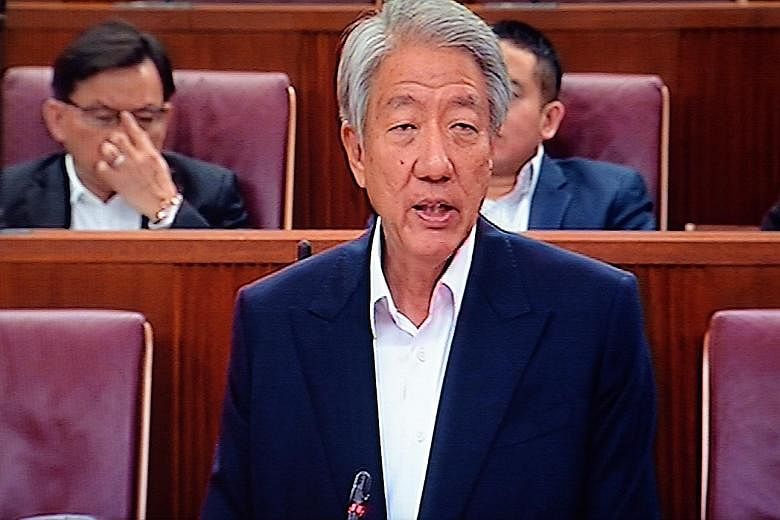The elected presidency serves as a check on the Government, and it is critical for the office and powers of the president to be protected against easy removal, said Deputy Prime Minister Teo Chee Hean.
At the same time, it must not be too onerous to amend the laws when changes are needed as the institution evolves over time, he said.
This need to strike a balance between "rigidity and flexibility" is behind the proposed amendments to a set of provisions in the Constitution that entrenches, or safeguards, the office and powers of the president, Mr Teo added.
Under the changes, the provisions will be categorised into two tiers: The first tier contains those provisions fundamental to the existence of the elected presidency, and will be harder to change; the second tier is on provisions on more operational aspects of the elected presidency and its custodial powers.
Mr Teo told Parliament: "The revised entrenchment framework seeks to achieve a more workable balance between preserving the adaptability of the entrenched provisions, and preventing easy removal or amendments to the elected presidency."
He added that finding a balance was ultimately a matter of judgment. Citing the example of the United States, he noted that only 27 out of nearly 12,000 proposals to amend the US Constitution have been successful so far.
For constitutional amendments in the US to be passed into law, they must be supported by two-thirds of both Houses of Congress and be ratified by 38 of the 50 states, he said, adding that this means even if more than 95 per cent of Americans support an amendment, it can still fail.
The current entrenchment framework states that the president can veto any attempt by Parliament to amend the Constitution to curtail his powers, and to override this veto, Parliament must get the support of two-thirds of the population in a national referendum.
But under the two-tier system, a national referendum will be needed only on changes to the first tier of provisions, if the president and Council of Presidential Advisers disagree with the Government. The referendum threshold will also be revised from a two-thirds majority to a simple majority, Mr Teo noted.
Another constitutional change proposed will give the recommendations of the Council of Presidential Advisers legal weight under the entrenchment framework, to serve as a counterbalance.
On the need for the framework, Mr Teo said there was a risk that a government "bent on raiding the reserves or compromising the public services" would try to get rid of the elected presidency, which acts as a check on the Government in these two key areas.
"By contrast, it would be much more difficult to remove well-established institutions such as this Parliament or the judiciary," he said.
The recrafted provisions will not be brought into force for now, while the Government observes how the other amendments to the Constitution operate in practice, he added.


